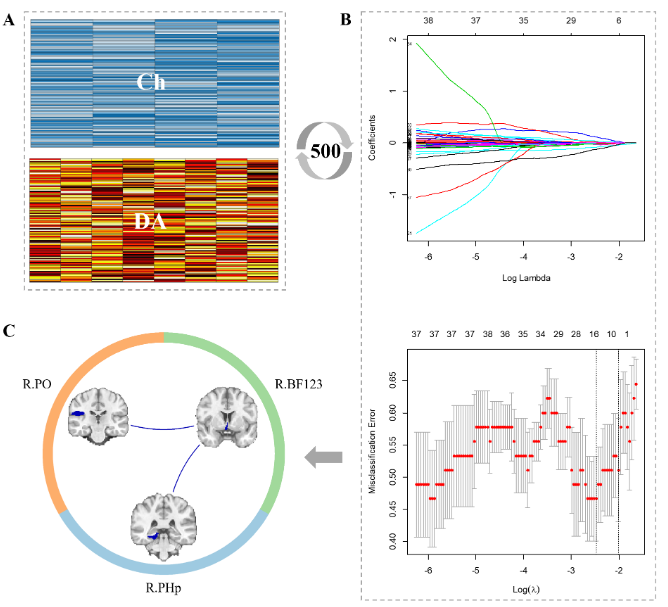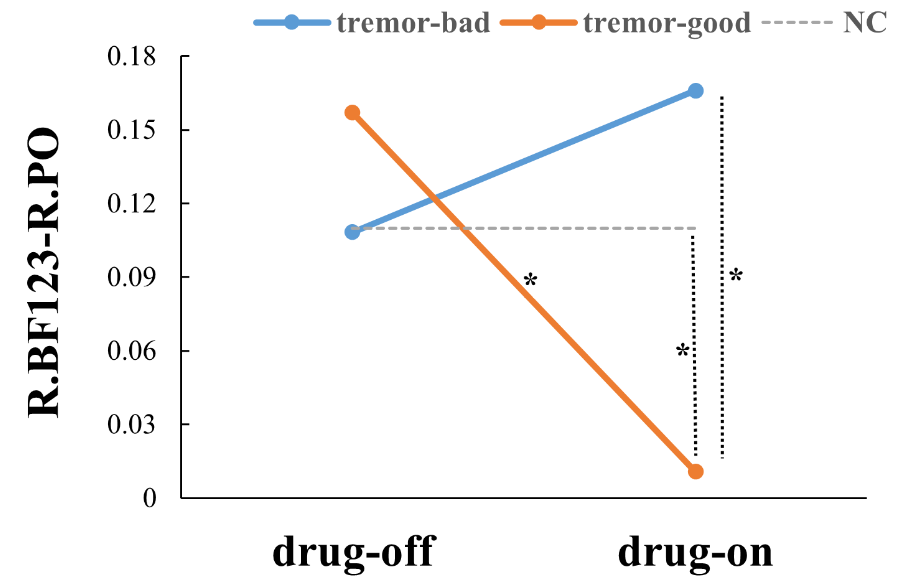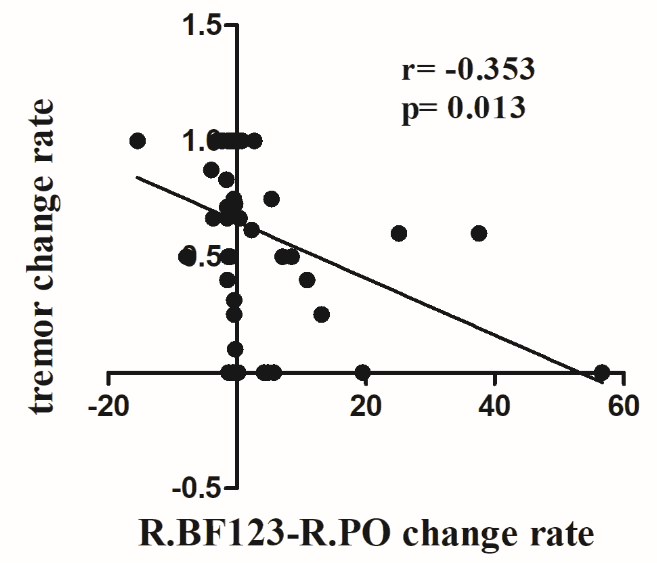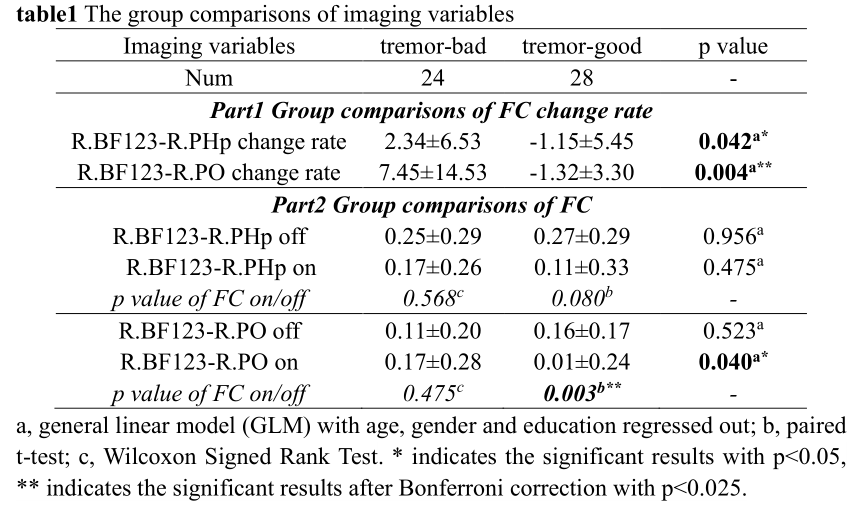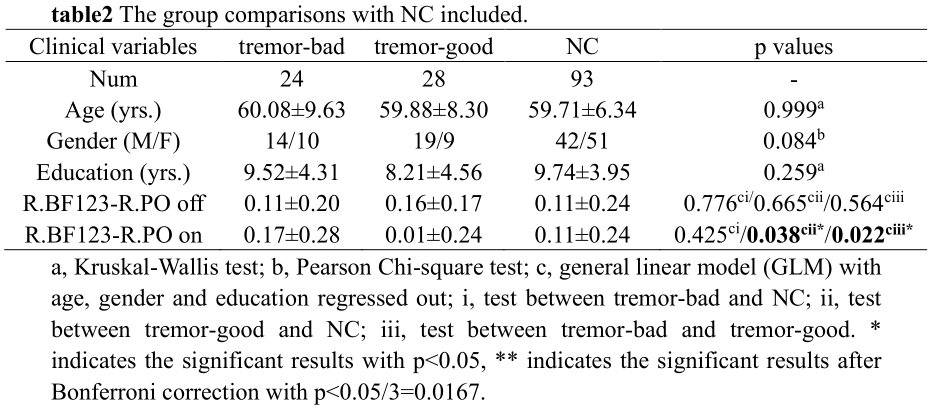Category: Parkinson's Disease: Neuroimaging
Objective: We aimed at exploring the mechanisms of differed tremor responsiveness to dopamine through investigating the cholinergic and dopaminergic reactivity during dopamine administration in PD.
Background: Tremor in Parkinson’s disease (PD) is supposed to have distinct dopamine responsiveness. Moreover, there is a specific relationship between cholinergic system and tremor, which indicates that the distinct tremor responsiveness may be related with cholinergic system.
Method: Fifty-two PD patients with tremor were enrolled. Clinical scores (UPDRS III and sub-symptom scores) and MR scanning were collected in OFF and ON status (a standardized dopaminergic challenge test). Then, PD patients were divided into two groups (tremor-bad and tremor-good) according to their tremor responsiveness median score. Dopaminergic (96×8) and cholinergic connectivity matrix (96×4) were obtained for each subject, and the LASSO regression model was conducted to identifying the functional connectivity with distinct reactivity during dopamine administration between tremor-bad and tremor-good subjects (figure1). Afterwards, the detailed group comparison and correlation analysis were performed.
Results: The cholinergic functional connectivity showed the highest possibility distinguishing tremor-bad and tremor-good PD patients; however, only change rate of right basal forebrain 123-right parietal operculum cortex (R_BF123-R_PO) could be corrected statistically significant (table1). For detailed, the changing pattern of R.BF123-R.PO during dopamine administration between tremor-bad and tremor-good was quite different (figure2; table2 showed the supplemented comparison results with normal controls), and the change rate of R.BF123-R.PO was further found to be negatively correlated with the tremor change rate (figure3).
Conclusion: The differential characteristics of cholinergic connectivity between basal forebrain and parietal operculum that related to the sensorimotor function in tremor responsiveness differed among PD patients, underscoring that the distinct cholinergic changing pattern during dopamine administration may be a reason for the differed tremor responsiveness in PD, which may have a conductive role for therapeutic treatment in the future.
To cite this abstract in AMA style:
J. Wu, C. Zhou, T. Guo, X. Guan, X. Bai, H. Wu, J. Chen, J. Wen, X. Liu, P. Huang, X. Xu, M. Zhang. Distinct cholinergic reactivity to dopamine is related with differed parkinsonian tremor responsiveness [abstract]. Mov Disord. 2021; 36 (suppl 1). https://www.mdsabstracts.org/abstract/distinct-cholinergic-reactivity-to-dopamine-is-related-with-differed-parkinsonian-tremor-responsiveness/. Accessed April 2, 2025.« Back to MDS Virtual Congress 2021
MDS Abstracts - https://www.mdsabstracts.org/abstract/distinct-cholinergic-reactivity-to-dopamine-is-related-with-differed-parkinsonian-tremor-responsiveness/

